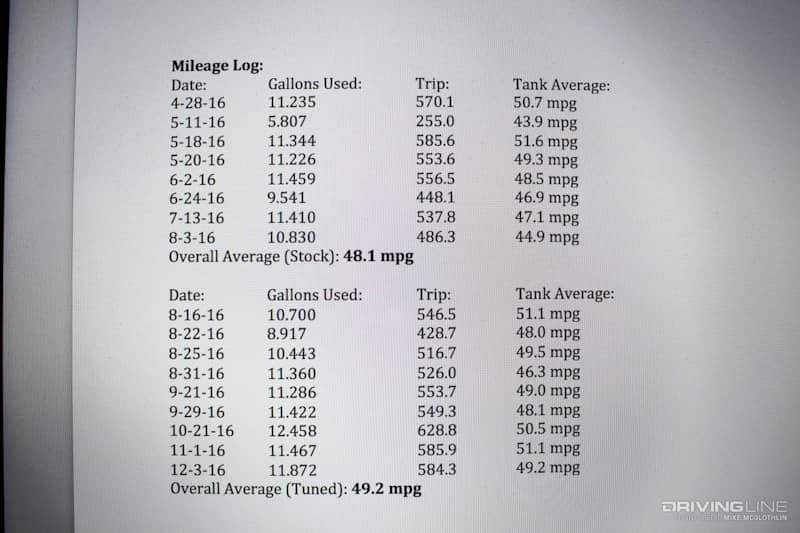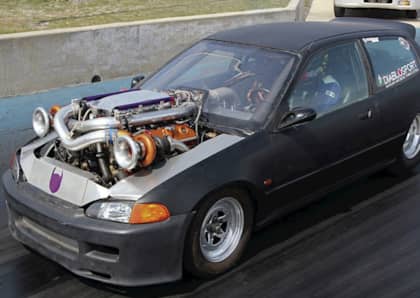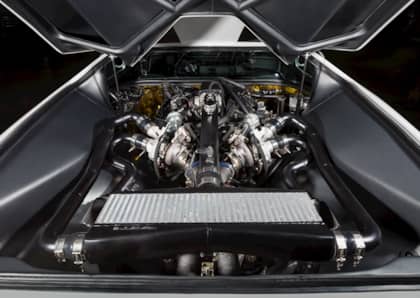The Ultimate Diesel Commuter Just Got a Whole Lot Better
It’s been nine months since we first got behind the wheel of our ’03 Volkswagen Jetta TDI parts runner — and we’ve been busy with it. In addition to racking up more than 10,000 miles and maintaining an mpg log, we’ve replaced the timing belt, water pump, thermostat, glow plugs, serpentine belt and tensioner in an effort to ready the car for the next 100,000 miles of use.
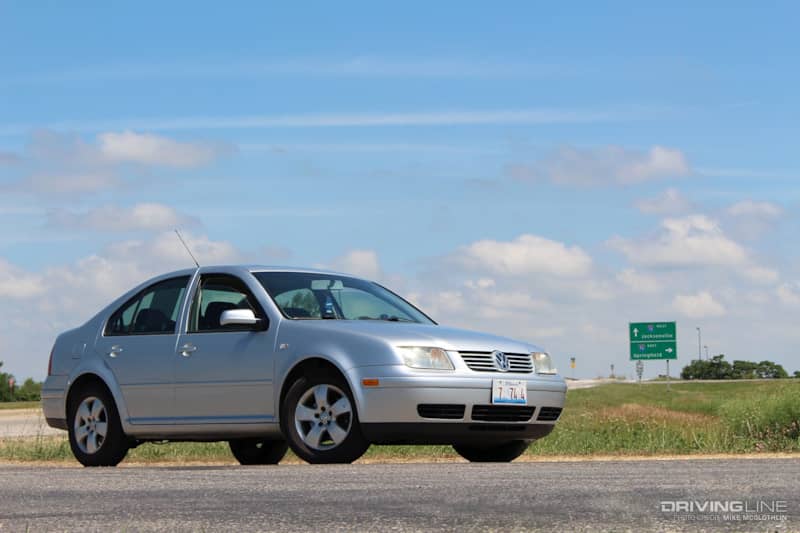
Most recently, we strapped the car to the chassis dyno for a baseline horsepower number, followed by adding a programmer to the mix. Follow along as we chronicle how we’ve gone about making our little V-dub more reliable, powerful and fuel efficient.
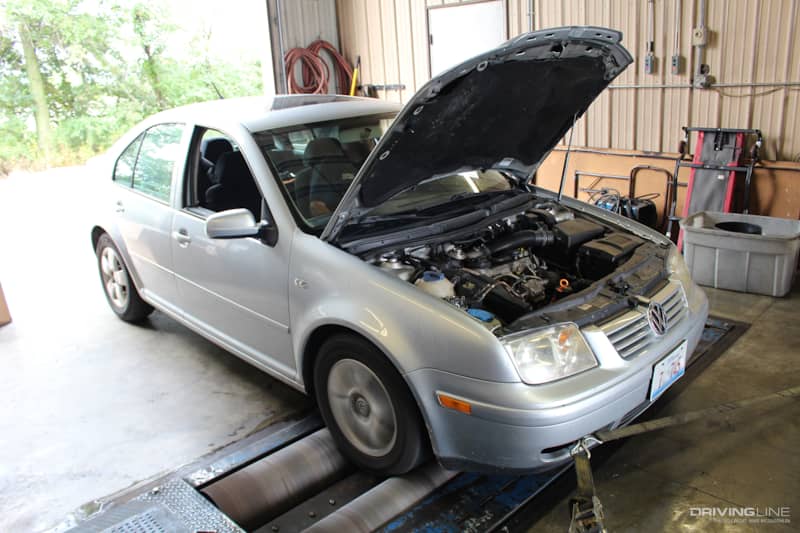
Keeping a High-Mile Car Mechanically Sound
Fourteen years after being produced, the 1.9L TDI diesel under the hood of our ’03 Jetta TDI is still purring like a kitten — and we want to keep it that way. It’s nothing for us to travel 200 miles one way for a photo shoot, so we need this thing to be uber-reliable for years to come, hence all the parts we’ve thrown at the car in this article.
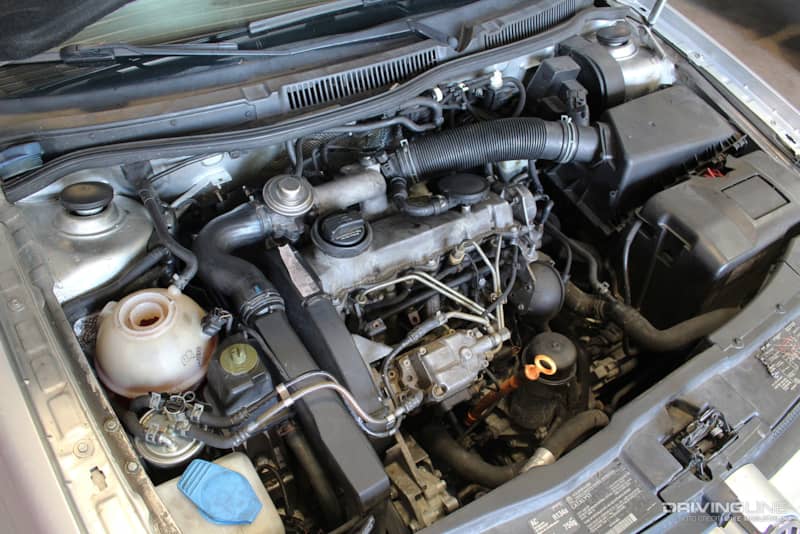
100K Insurance Policy
Because the 1.9L TDI is an interference engine, its timing belt needs to be replaced every 100,000 miles to avoid the ill-fated piston-to-valve contact. Because we had surpassed the 200,000-mile mark (and because it was time for the car’s 100K change interval), we opted for the “High Mileage” kit offered by Kerma TDI. The company’s all-inclusive kit comes with everything you need to replace on a high-mile ’99-’03 Jetta. The kit entails a new, high-quality Gates cog-style timing belt, timing belt tensioner, water pump, serpentine belt tensioner and a 1.5L container of Rowe HighTec G13 coolant; we also threw in a new serpentine belt for good measure. Kerma TDI’s High Mileage kit runs $399.
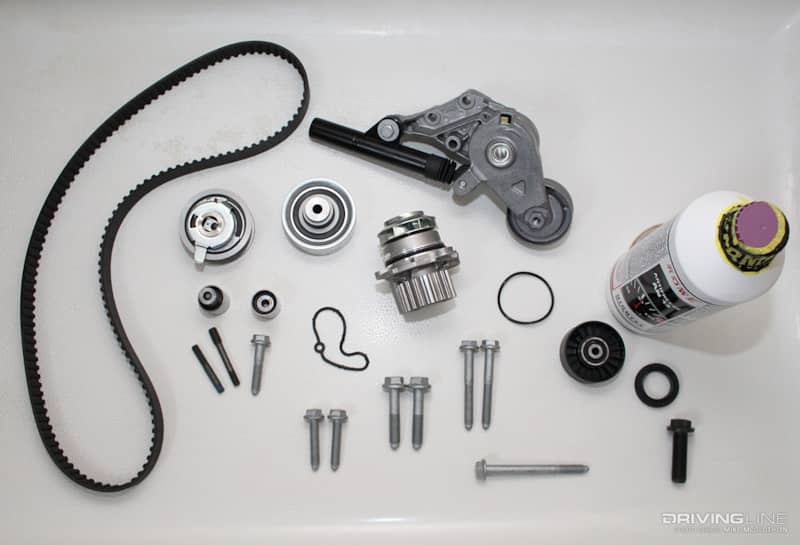
Out With the Old
Being that the car had 202,000 miles on it, we were pretty sure we weren’t replacing the factory water pump. However, the water pump we pulled out of the engine did have the notorious plastic impeller, which is known to fail prematurely. Specifically, it’s common for the plastic impeller to spin on the shaft and cause overheating issues. To rule out this possibility, Kerma TDI includes a metal impeller HEPU water pump in its High Mileage timing belt kit.
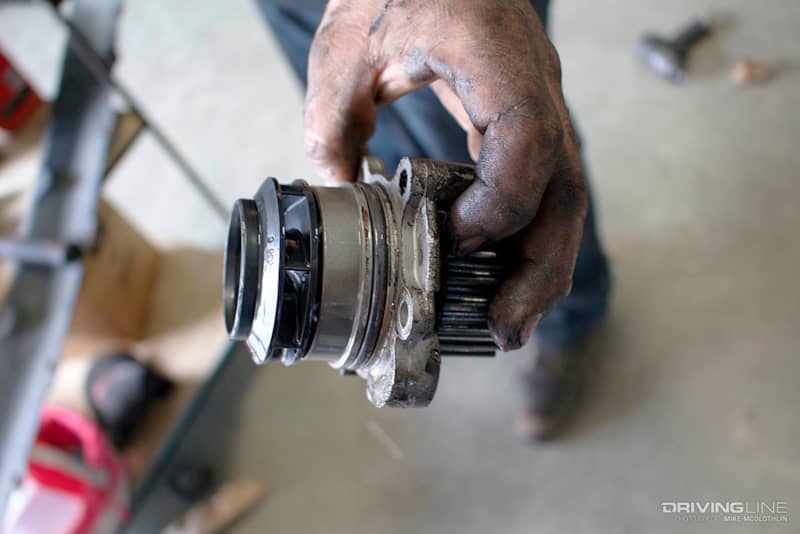
Additional Safeguard for Used Cars
We also opted to start with a fresh thermostat (PN 044121113) while the timing belt and water pump were being replaced. At the recommendation of a former VW tech, we purchased a new thermostat housing at the same time (PN 038121121). We’re glad we did. Notice that the thermostat housing on the right had damaged locking pins, which are plastic and can easily be broken. The pins (visible on the housing on the left) are used to hold the thermostat in place once it’s installed.
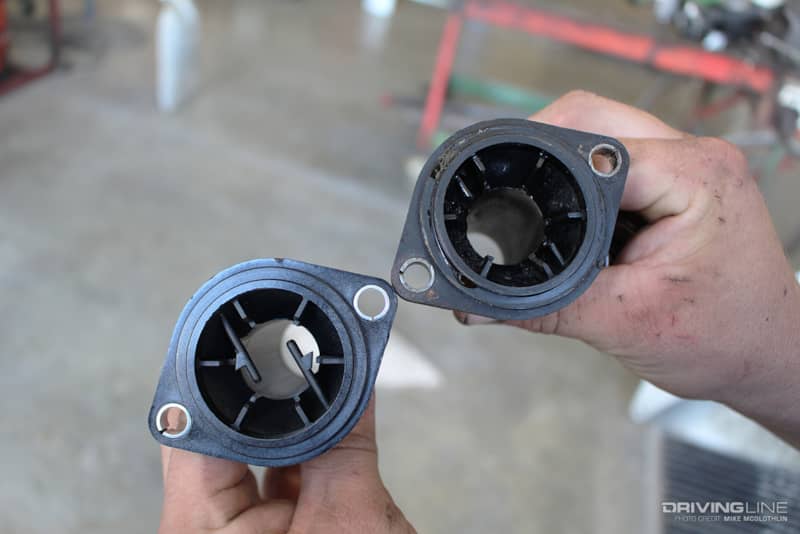
Cold-Start Help for Older Vehicles
To aid cold starts and because they’re easy to access, we went ahead and replaced all four glow plugs right before winter struck. The Beru units we chose came from Kerma TDI (PN N10140105) and carry with them the same quality you’ll find in genuine Bosch units. Glow plugs are another potential failure point that we wanted to make sure we ruled out. Over time (and if neglected long enough), the tip of a glow plug can become brittle and crack — and because they’re positioned on top of each piston you don’t want anything falling in-cylinder. Since installing new units, we’ve had zero issues getting the car to start in single digit weather.
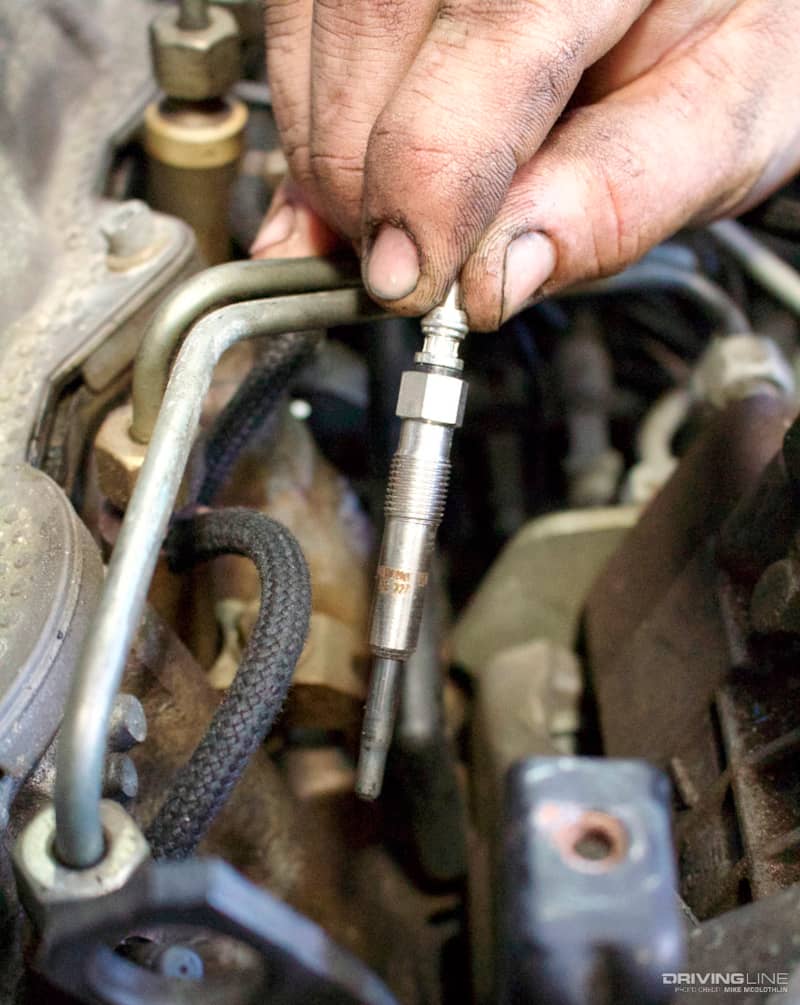
The Q-Loader
With just 90 flywheel horsepower, you can imagine our desire to give the Jetta a little more oomph. Once again, Kerma TDI gave us a helping hand and this is the tool we used to unlock more power: the company’s Q-Loader programmer. On a bone-stock car, Kerma claims an extra 25hp and 60 lb-ft of torque is possible with one of its custom ECU calibrations.
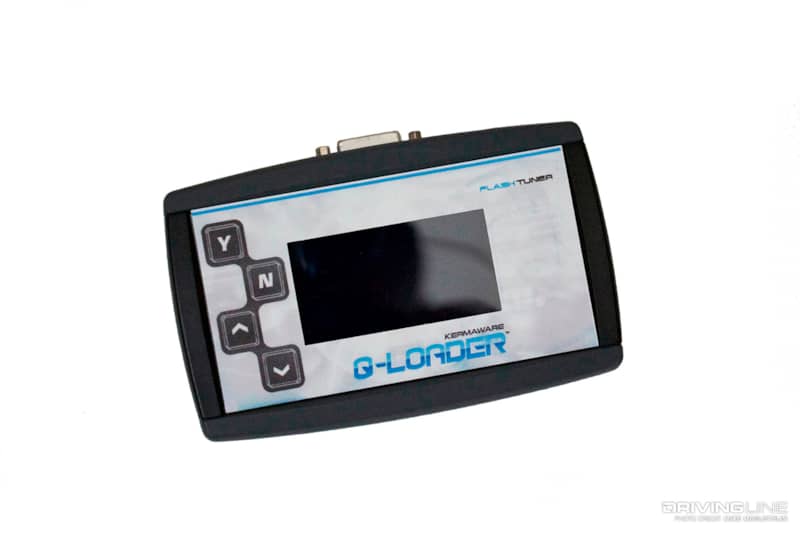
Q-Loader Software
In order for the Q-Loader to work, you have to download the Q-Loader console PC interface software onto your computer. Kerma TDI supplies highly detailed, step-by-step instructions on how to do this.
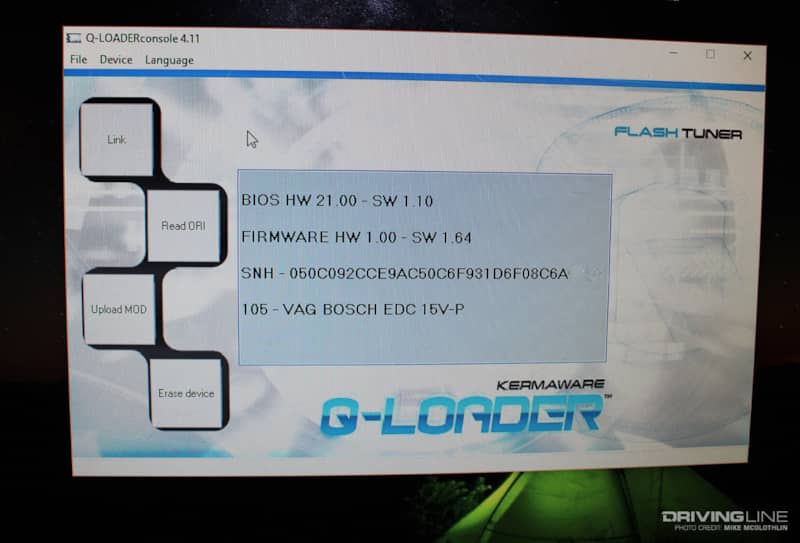
Click and Drag
Once we’d downloaded the Q-Loader software onto our PC, we used it to configure the programmer for our specific model car. From there we connected the programmer to the car via the OBD-II port, pulled the stock ECU file and emailed it to Kerma TDI. A few minutes later, a modified tuning file sat in our Inbox. We promptly added the new file to the Q-Loader and scheduled a trip to the chassis dyno.
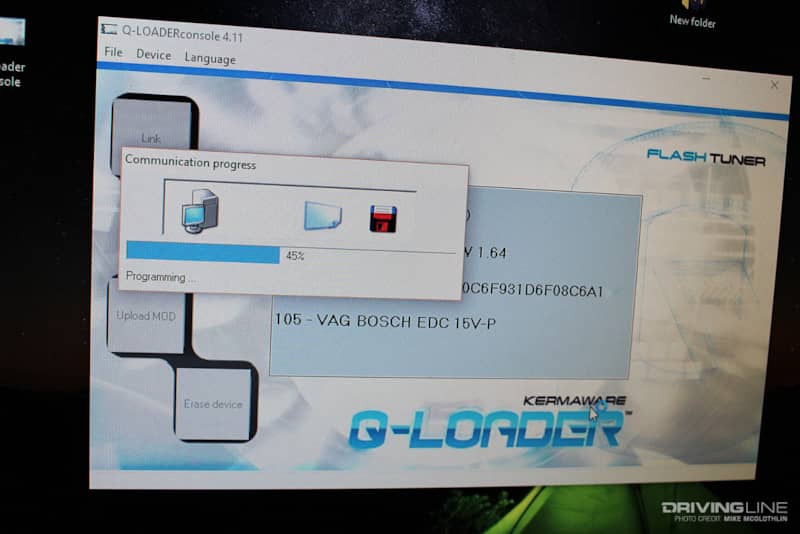
Date With the Dyno
To find out exactly how much power the Q-Loader added to the car, we made a trek over to Scheid Diesel Service to use its Mustang chassis dyno. It’s worth noting that the folks here are used to dynoing high-powered diesel pickups and the dyno’s loading capability is used to place the trucks under full load in order to produce full boost. For our visit however, we quickly found that our little Volkswagen wanted no part of the dyno’s load functionality (it couldn’t pull through it). So, the car was tested solely in inertia mode and our baseline (stock power) horsepower number checked in at a lousy 72 horsepower. But, with a 90hp rating at the crank, 72 seemed like a credible amount of ponies making it to the front tires.
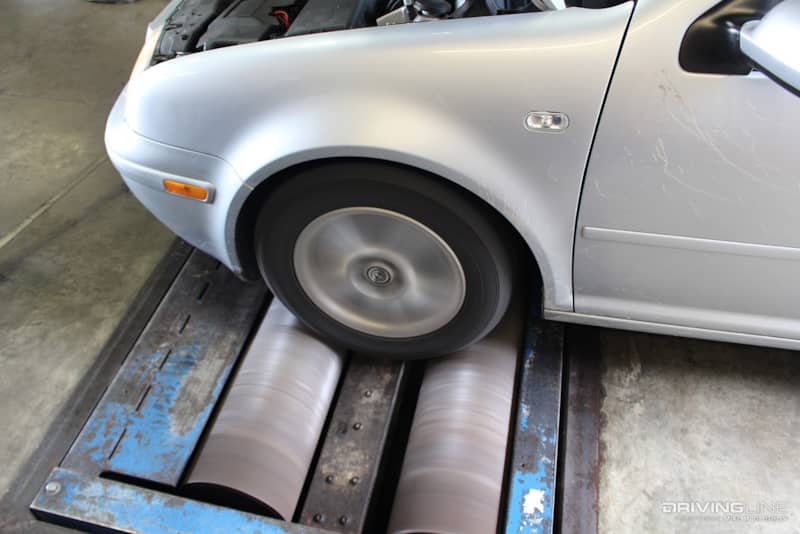
Recovery Hook = Anchor Point
With literally no place to hook onto the car’s subframe, it was secured to the chassis dyno by utilizing the front recovery hook. Gaining access to the recovery hook calls for removal of the passenger side lower pop-out panel and installing the tow hook stowed in the trunk. We’re glad ours was still there and were subtly surprised to find that it’s reverse thread.
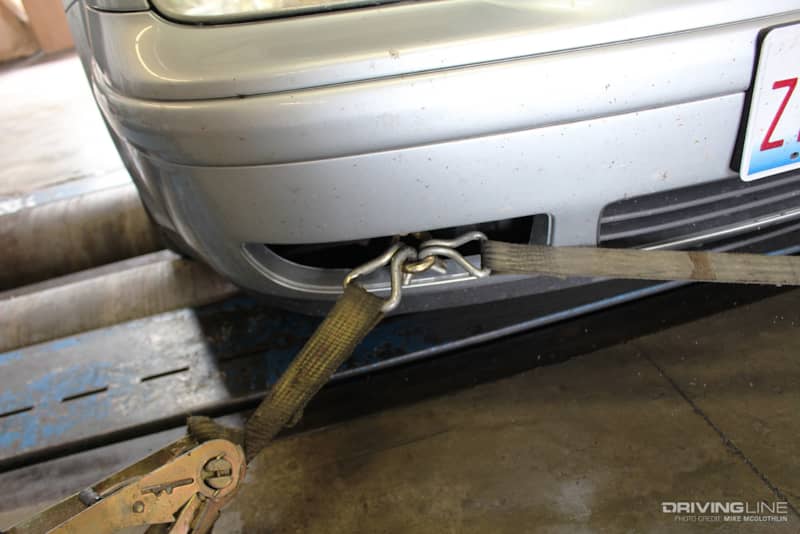
Uploading Horsepower
After obtaining our baseline dyno numbers, it was time to reflash the ECU with Kerma TDI’s performance file. We simply followed the on-screen directions and the key-on and key-off ignition prompts until getting to this screen. In total, changing tunes with the Q-Loader takes about 10 minutes, which is about average for most programmers in the diesel industry.
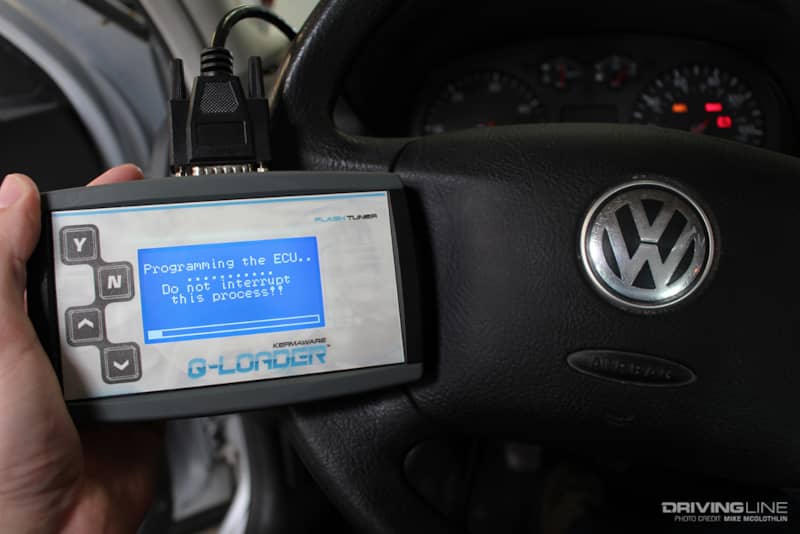
+33 Horsepower
With the Q-Loader in the mix, we immediately noticed how much shorter the dyno test was (i.e. more power was now on the table). We were hoping to see a 25hp gain, but were blown away to find that we’d picked up 33 extra ponies (a 45-percent increase). On the street, the difference between a 72hp Jetta and a 105hp one is night and day. The car now feels more eager to run and pulls much harder throughout the entire rpm range. Thanks to Kerma TDI’s highly refined tuning, our Jetta is clean-burning (no smoke), the throttle is linear and the car is a lot more fun to drive now that it can keep pace with traffic. The icing on the cake is that we’ve also seen a bump in fuel economy. So far, the “tuned” version of our Jetta has benefitted from a 1.1-mpg increase (see our mileage log below for more details).
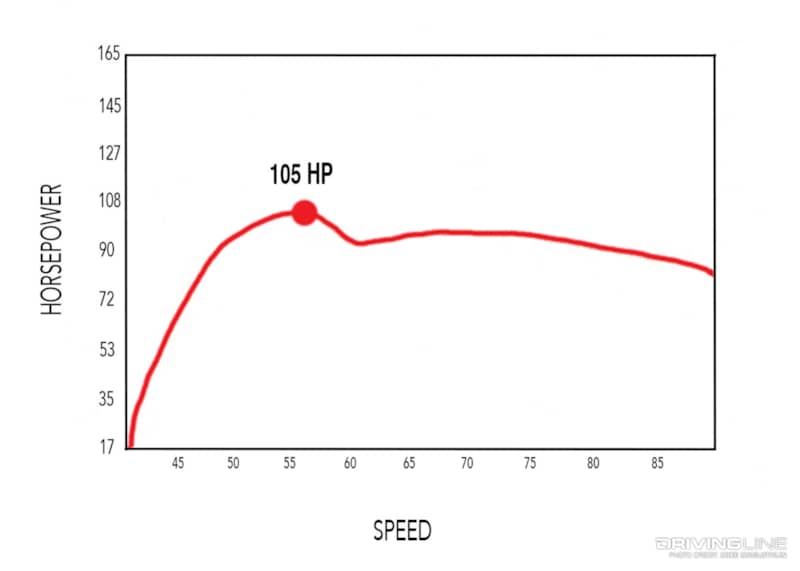
Going the Distance
On this tank of fuel, we traveled an impressive 628.8 miles. If you do the math, that’s more than 50 mpg, which has been par for the course to date (and not to mention easy on the wallet). At one point, we drove the car an entire month before a fill-up was required!
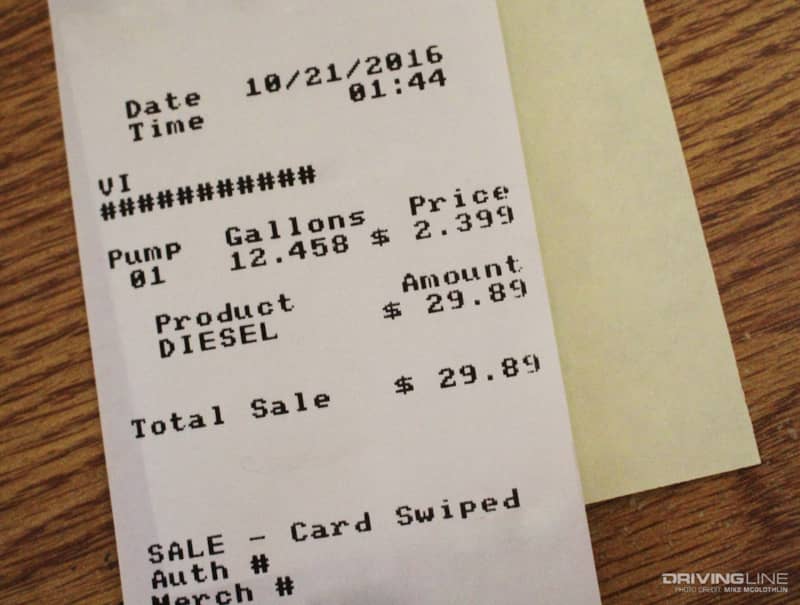
Mileage Log
